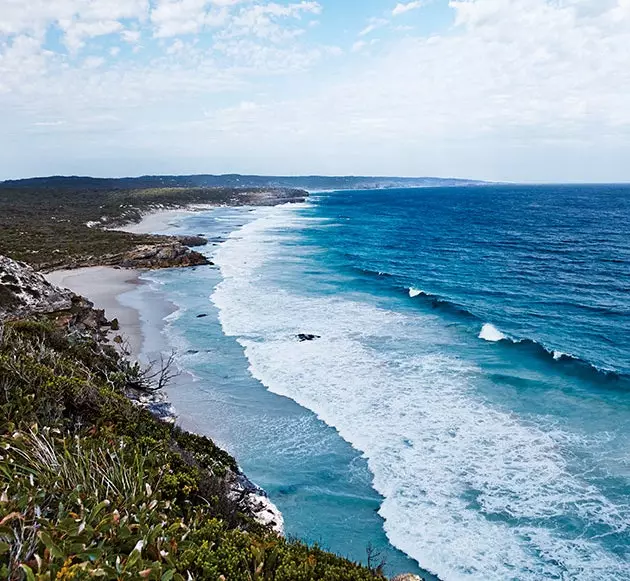
Hanson Bay from Kangaroo Island
When the flowers of the bat coral tree begin to fall, Aboriginal women know it is time to extract fresh crabs from the mangrove mud . And when the white acanthus bloom, it is a sign that the shores of the sea are full of crustaceans of good size. Australian aborigines do not feel they own mother earth and nature, but rather they feel part of it. They do not measure the seasons with calendars, but by the change of winds, flowering of plants and crops.
The encyclopedic knowledge that these women have on plants and animals has been handed down from generation to generation and, despite the colonization they suffered in the eighteenth century, this knowledge has not only survived but has prospered. But today, unfortunately, all this accumulated wisdom that could surprise and enrich most Australians has not reached them.
The chef of the Orana restaurant, jock zonfrillo , who spends most of his time going with the natives to hunt, harvest and gather various ingredients from the land, he explains: “I call it the wince of pain,” he says, laughing at the horrified reaction of Australians when, in his small restaurant in 25 diners , they find out what they have tried. “They put on a disgusted face even before they have tasted the dishes.” And although he only talks about food, Zonfrillo could be unmasking deeply rooted cultural prejudices that generate this rejection of everything that represents aboriginal culture.
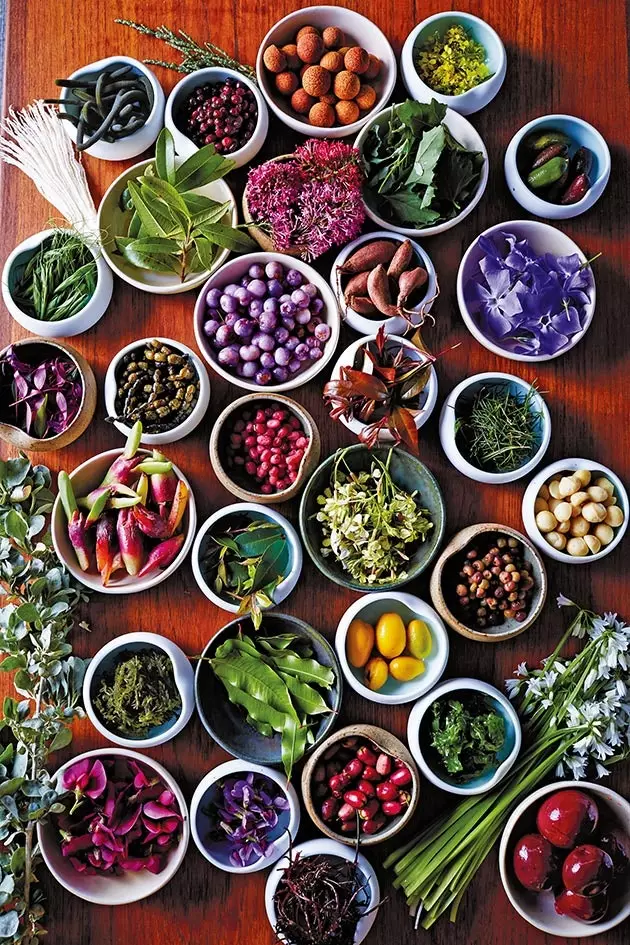
The mise en place, in Orana
Zonfrillo moved to South Australia from his native Scotland after passing through sydney, in the year 2000, and he is hell-bent on changing things in his power. The menu of the Orana restaurant, in adelaide , is one year old (the name means ' Welcome ’ in an Aboriginal dialect), and is a genuine tribute to the wild and uncharted fertility of Australia . The menu is a great revelation of strange plants and fruits (purple lilly pilly, finger files, etc.) in which there is also room for legendary animals of the territory such as kangaroos, wallabies and crocodiles.
With Orana, Zonfrillo has joined the forefront of Australian chefs whose respect for the land and curiosity about the country's often-ignored history is not only helping to bridge the deep cultural divide between Aboriginal and non-Aboriginal Australians but also is beginning to answer the question that used to have no answer: What is the real Australian cuisine ?
For those who visit the continent for the first time, gastronomy takes them by surprise. They come in search of landscapes and wildlife and they leave already missing that perfect cup of coffee or that Bolognese or Pekingese restaurant. Multicultural, well traveled and increasingly wealthy, Australians have developed a cosmopolitan palate and are masters at art of appropriation and reinvention . And yet something has long held native cuisine back. Specifically, it has been the perception that, despite the abundance of endemic flora and fauna, the cuisine has always been a copy of the gastronomy of some other country . That same lack of definition of its own flavor, of an Australian identity, has prevented it from finding a permanent place on the world gastronomic map.
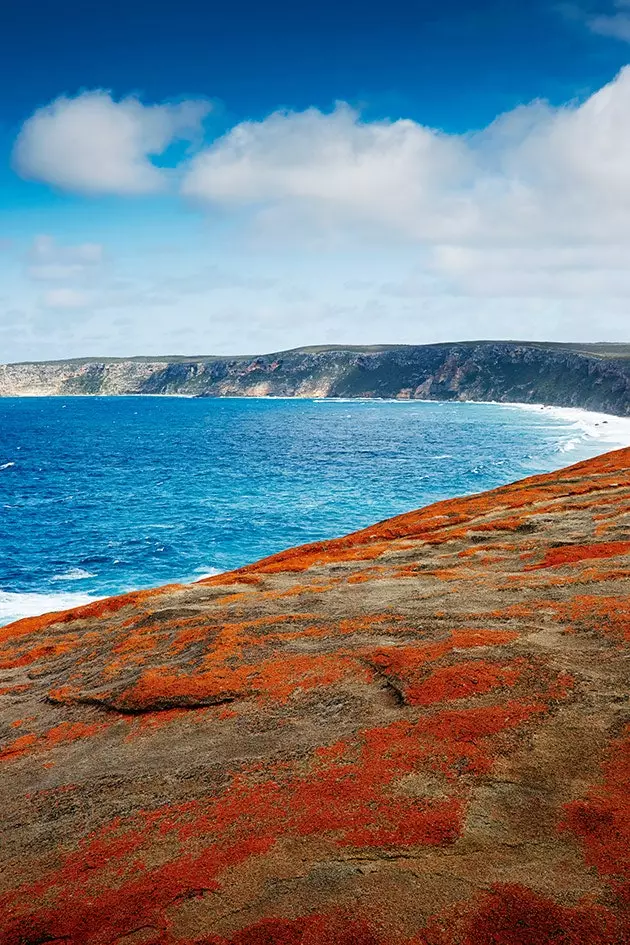
Flinders Chase National Park, Australia
It had to be the famous cook Rene Redzepi , founder of the award-winning restaurant Noma , the one who made a wake-up call. Although the terrains of Denmark and Australia are very different, the gastronomic challenges of the two countries are curiously similar. In 2010, standing on the stage of the Opera house of sydney , and with local chefs gathered before him, he made it clear: "I've driven a lot of miles to come here and I still don't know what Australia tastes like." And he continued: “You have some of the most talented chefs in the world but what I don't understand is why you are not using the ingredients that you have around you”.
Redzepi's message hit home. Today, only four years later, the menus of many of the best establishments in the country not only integrate local ingredients but also turn them into the stars of the show . In Sydney, the chef Kylie Kwong serves what she amusingly calls “ native chinese dish ”, which is actually Peking duck with a spicy touch thanks to the fruit quandong ; or the wallaby tail that she prepares with five different spices. At the Attica restaurant, in melbourne , Ben Shewry wraps King George fish with tea tree bark (the Australian form of fish en papillote) .
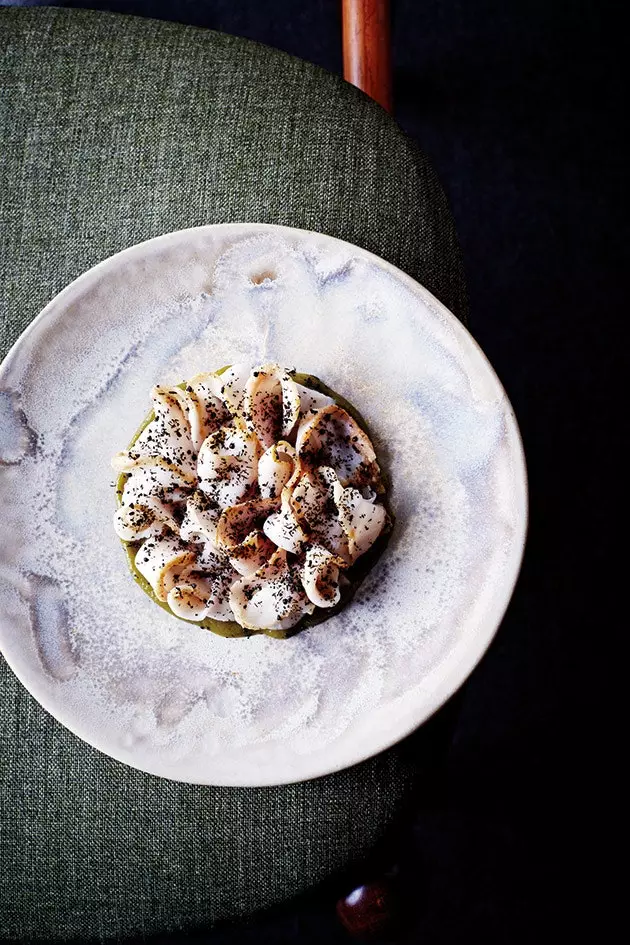
Crocodile with fermented mangrove seeds and salt
But of all those who heard Redzepi's call to action, it was Zonfrillo who was struck to the core. Like in the noma (where he had worked before moving to Sydney's Forty One), his restaurant, Orana, embraces a philosophy based on cooking under the influence of nature and the environment . The 38-year-old chef also got to this point through an accurate intuition that he had previously had.
Zonfrillo felt the need to immerse himself in Aboriginal cooking and traditions for a year. Even before Orana had opened, the chef traveled to native communities in rural areas . Each trip could stretch for months, collecting ingredients from the fields, in backyards and along paths to find the most unusual. “At first, some people didn't want anything to do with me,” he remembers. "It took me a long time to gain their trust, but once I did, they were incredibly generous."
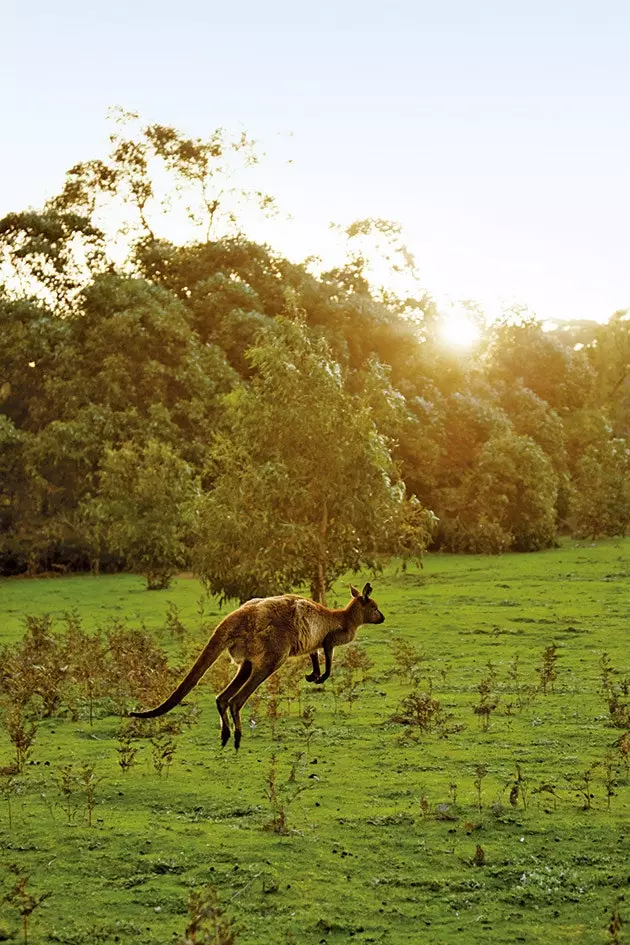
Philosophy based on cooking under the influence of nature
In February, Zonfrillo plans to launch the Orana Foundation , an organization dedicated to preserving the knowledge of the aboriginal cuisine through the connection between elderly native harvesters, restaurants and consumers . "We are a few years away from losing a generation of older people," he says, "and losing that knowledge would be a tragedy for Australia." For now, it is Zonfrillo's own cultural background that is evident in every dish served at Orana. The dinner that he presents us is made up of a variety of small dishes that the chef calls “ alkoopin ” (a word that the dieyerie tribe uses for snacks) and that, altogether, it is like a kind of hymn to the wealth of the region.
The state of South Australia is famous for its seafood . For this reason, a meal could begin with both a Spencer Gulf Prawn rare and sprinkled with dried plum davidson (fruit of the tropical forest) such as kangaroo fillets wrapped in leaves of the wax flower plant – which are similar in shape to the leaves of the aromatic citronella – a flower that is most likely to be found in a vase above the fireplace of an old woman. The next could be a sea fennel risotto (a wild coastal vegetable) accompanied by smoked kangaroo tail either crocodile loin served on a bed of fermented gray mangrove seeds and sprinkled with black ant salt.
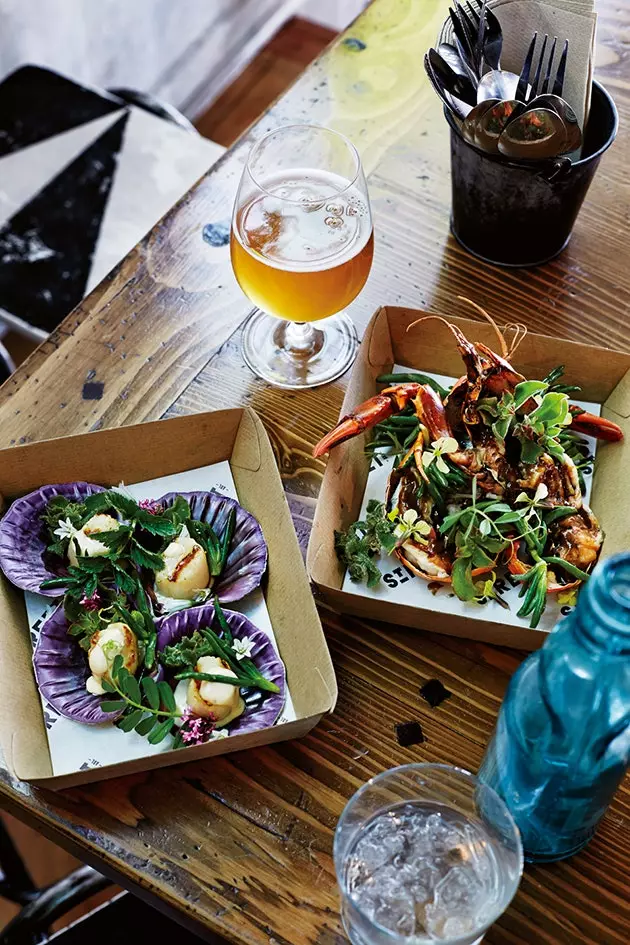
Braised prawns and plum in Orana
But Zonfrillo winks at the contemporary as well as indigenous flavors . The Wild Chenopodium hastatum (Australian edible plant) tastes curiously like vinegar chips , and the butternut squash slices roasted in fat beef reminiscent of the classic sunday roast . But when many diners really have the revealing moment that Zonfrillo wants to evoke is when they taste the palate cleanser, a wild salad of native and invasive species . Astringent, fibrous and delicately sweet, it is complex and simple at the same time. And it achieves exactly what is intended: tastes like australia . If part of Zonfrillo's revolution involves embracing the aboriginal flavors , the other part implies the hug adelaide itself . Although the city of 1.29 million people has a proud past – it was the first on the continent to be made up of free citizens rather than convicts – it is now one of the many, sleepy and provincial, compared to the sophisticated sydney Y melbourne.
On the other hand, both the city and the region can be considered the home of the movement' from field to plate ’ from Australia, a style of food in which the most important thing is pleasure and flavor over sustainability. It was here that, in the first decade of the 19th century, the first Germans and Italians settled, bringing with them their passion for food and wine. Today Adelaide is the wine capital of the country and wherever you look, you find yourself vineyards dotted with sheds and fenced in by bushes . That is, without a doubt, the typical landscape of South Australia.
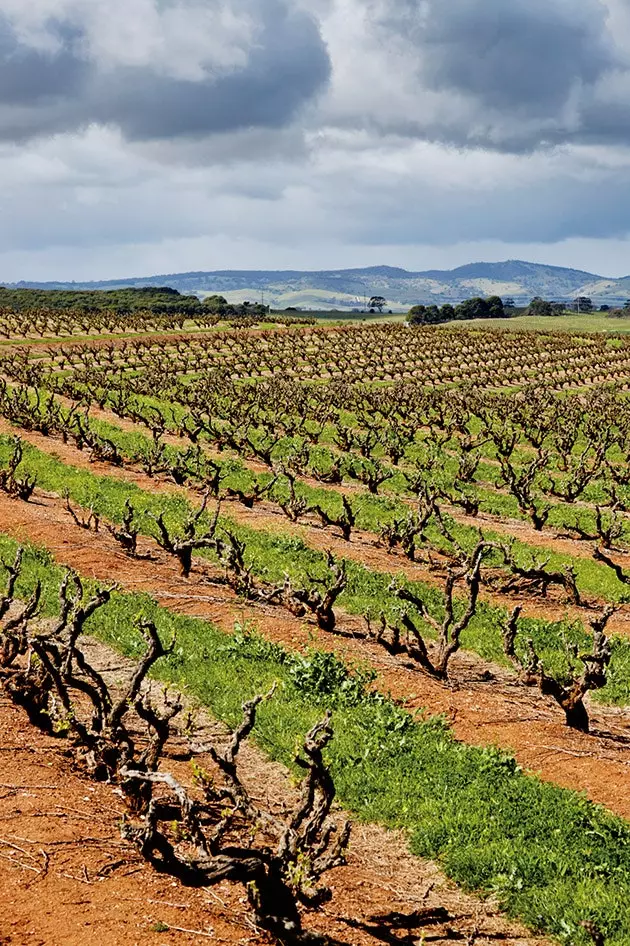
Adelaide is the wine capital of the country.
At the end of the 19th century, a terrible plague of phylloxera wiped out most of the ancient vines of the country . But due to the geographic isolation of South Australia, 1,400 km west of Sydney and 750 km north-west of Melbourne, its vines managed to survive . The regions surrounding Adelaide therefore have some of the oldest producing vineyards in the world . You can find a variety of Shiraz very robust in barossa valley , delicate rieslings in Claire , Italian nebbiolo in the area of McLaren Voucher and a powerful cabernet sauvignon in the terra rossa of Coonawarra . So the Adelaide Hills (the area that unites all these wine regions) is the home of young biodynamic winemakers who understand the farm as a living system.
Each of these regions is a couple of hours from Adelaide, so that the city has become the quintessential australian wine capital , with all that this implies gastronomically speaking. In addition, the state of South Australia (whose capital is Adelaide) is the birthplace of a particular style of cooking, rustic but refined. Maggie Beer is to the country what Alice Waters is to the US (Vice President of Slow Food International) .
This 70-year-old matriarch is a self-taught cook, she the first to put the gastronomic focus on the Barossa Valley . In 1978, Beer and her husband Colin opened Pheasant Farm , the restaurant that changed the way Australians think about the origin of the food they eat and its seasonality. She fused a European style of cooking with an Australian approach that is still emulated in South Australian cafes and bars. Pheasant Farm closed in the '90s, but Beer still runs a store on the site of her restaurant and visitors come to shop pâté, agraz (acid juice extracted from white grapes) and fig and caramel ice cream.
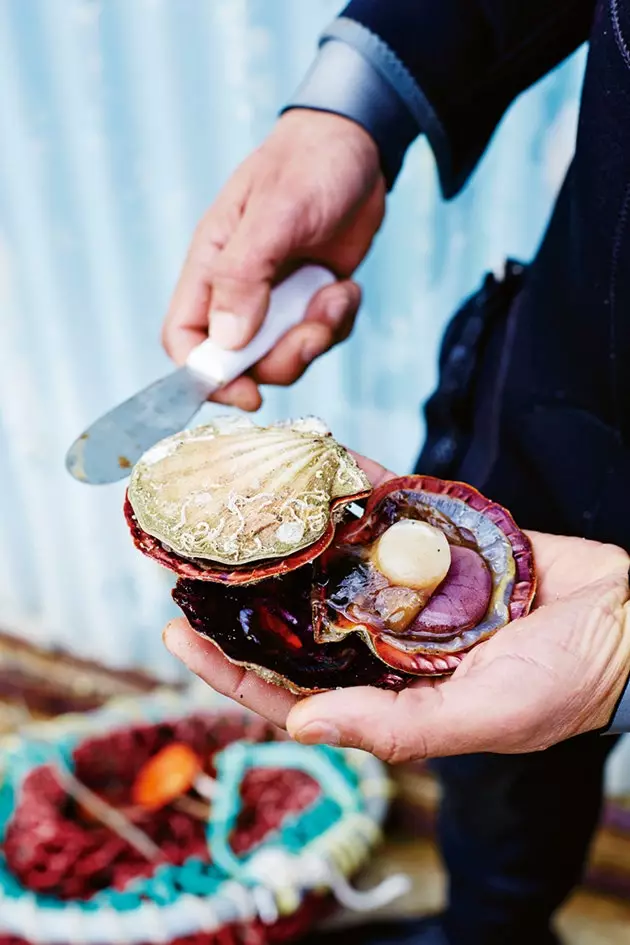
Australia, a culinary country
The land here is rich in plantations and farms but it is also eerily wild. Just off the southern Australian coast lies one of the country's most beautiful rarities, the kangaroo island . Often known as 'Australia's Galapagos' for its varied and unique animal life , the island has a rugged coastline inhabited by seals and birds, some sea lions, farmland with more kangaroos than sheep, and roads inhabited by echidnas (small mammals that look like hedgehogs and lay eggs) and that try by all means to avoid being crushed by vehicles. But what is most intriguing is the less visible life on the island. The streams are full of Cherax, also known as freshwater brown lobsters and sea laden scallops and abalone.
The island is also home to the bee sanctuary best preserved in the world. Immigrants from Italy brought their bees from Liguria to Kangaroo Island a century ago, and now that the bee has become extinct in Italy, this island is the only place where they still exist. The native wildflower honey they produce is coveted worldwide for its flavor and delicacy. “Incredible products can be found here”, Zonfrillo says. But most importantly, in South Australia you feel the collision of the old Australia – a culture from 40,000 years ago – and the new and, shimmering on the horizon, a cuisine that combines them to create something genuine, the very history of Australia. . "Just as Aboriginal art represents our landscape and unites all Australians," says Maggie Beer, "so can cuisine." A country that delights in reinvention deserves no less.
*This report is published in the February issue of Condé Nast Traveler, available in its digital version for iPad in the iTunes AppStore, and in the digital version for PC, Mac, Smartphone and iPad in the Zinio virtual newsstand (on mobile devices). Smartphone: Android, PC/Mac, Win8, WebOS, Rim, iPad) . Also, you can find us on Google Play Newsstand.
*** You may also be interested in...**
- Sydney Guide
- The ten best cities in the world to live
- Extreme fauna: bugs that you can see if you travel to Australia
- Gold Coast: why visit the Australian Miami
